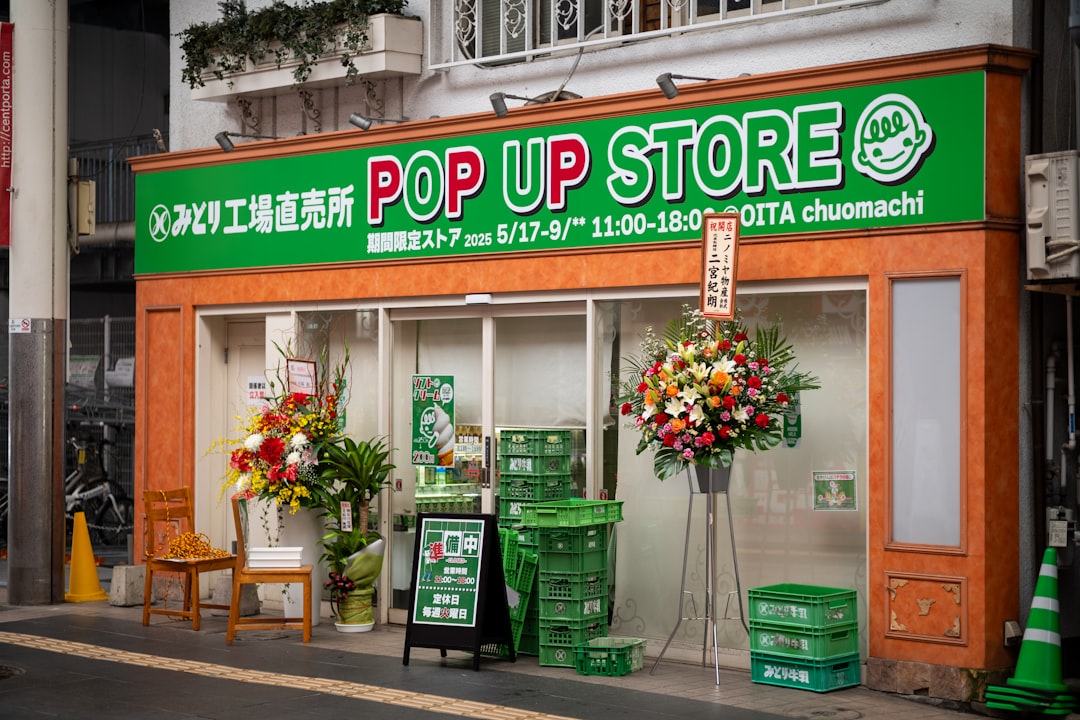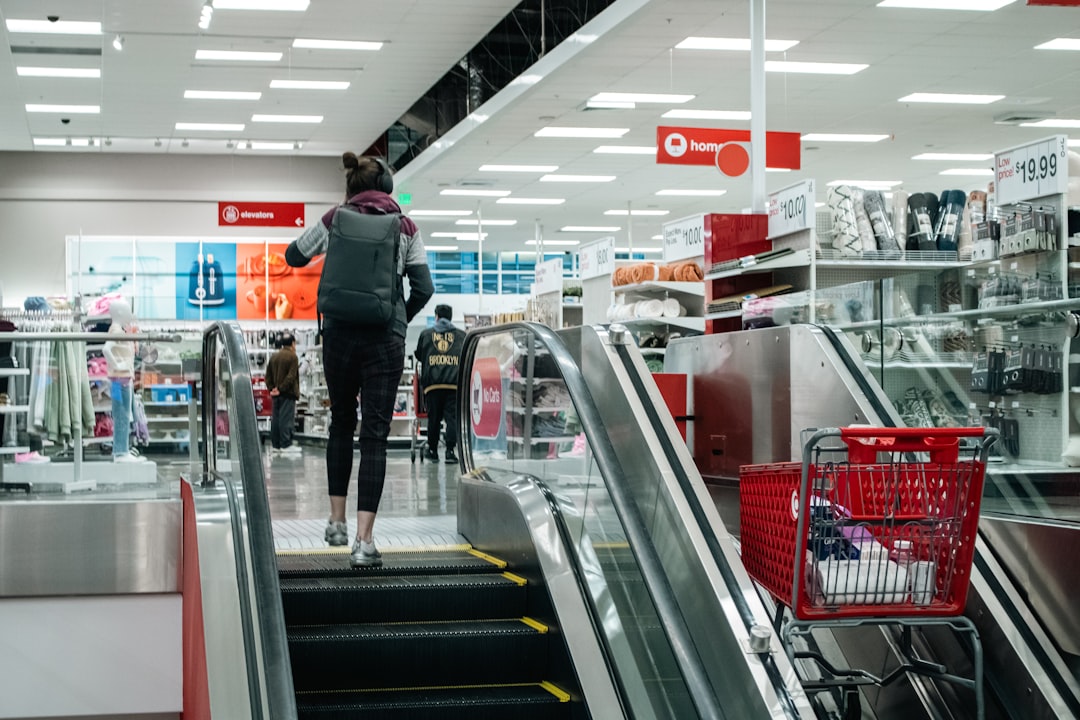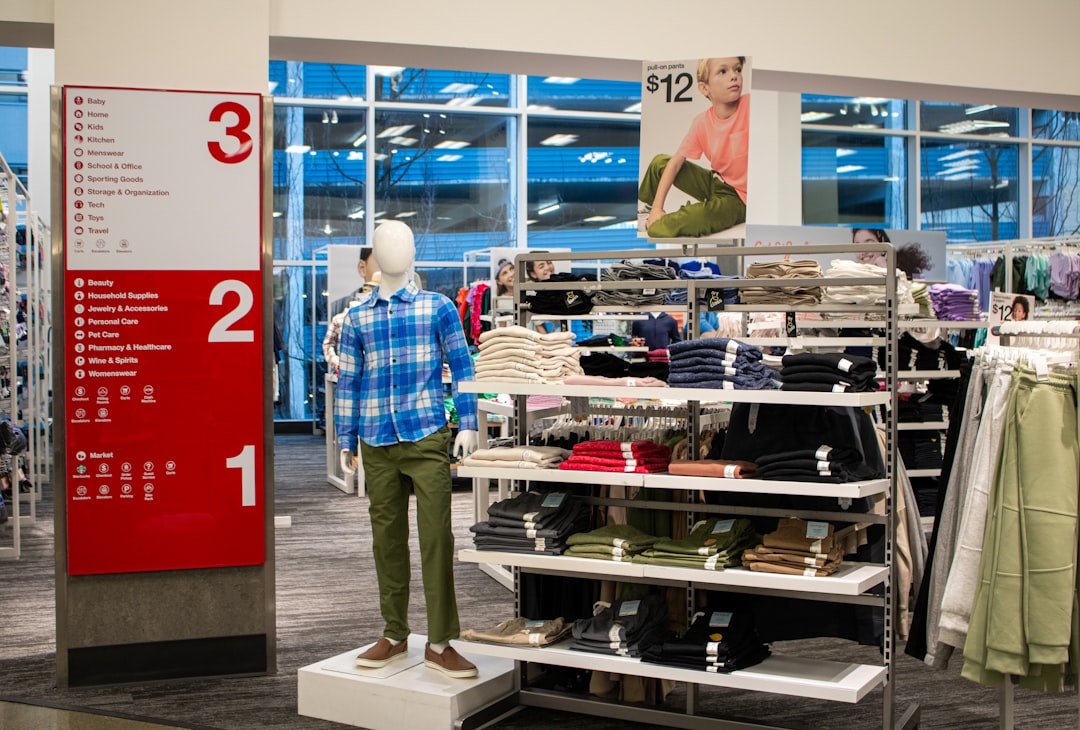

Engage prospects with a scan and streamline customer engagement with FREE QR code marketing tools by Sona – no strings attached!
Create a Free QR CodeFree consultation

No commitment

Engage prospects with a scan and streamline customer engagement with FREE QR code marketing tools by Sona – no strings attached!
Create a Free QR CodeFree consultation

No commitment
Pop-up retail stores have rapidly evolved as a flexible channel for brands to create buzz, test new markets, and build direct relationships with customers. Amid a challenging retail landscape, these temporary shops offer businesses agility to capture attention, drive foot traffic, and generate memorable in-person experiences, often in locations that would be unaffordable or impractical for a permanent presence.
With so much riding on brief activation windows and resource-intensive setups, the stakes for audience engagement have never been higher. Many marketers still struggle with analog workflows like distributing printed brochures, manually collecting attendee data, or relying on static displays that have difficulty translating interest into measurable results. A common challenge in these dynamic settings is the risk of losing high-value prospects simply because they do not submit a form or provide their info during the event, resulting in missed opportunities and fragmented customer journeys.
QR codes bridge this gap, turning every physical touchpoint into a seamless digital entry point. By automating engagement, driving real-time interactions, and passing valuable behavioral data into your CRM, QR codes help pop-up retail stores unlock deeper insights and create frictionless customer journeys from street to screen. Modern QR solutions enable brands to identify and follow up with interested visitors, even if they have not filled out traditional forms, ensuring that genuine interest is nurtured and not lost in the crowd.

QR codes transform traditional static processes like paper sign-up sheets, analog loyalty cards, or one-off flyer promotions by instantly connecting customers to digital journeys as soon as they walk through the door. This addresses the persistent problem of failing to capture contact details from shoppers who browse but never formally engage, leaving high-intent prospects untracked in your CRM. Replacing outdated tactics with a well-structured, QR-enabled workflow lets you meet visitors at their moment of curiosity and move them forward quickly.
The approach is simple: define the outcomes that matter, choose QR destinations that accomplish those outcomes, and track every scan back to the exact placement and moment. When a shopper can launch a demo video, claim a discount, or opt in to messages in a single scan, engagement rises and attribution becomes clear. Add dynamic QR codes, and you can update offers mid-event without reprinting, while maintaining a complete record of who engaged and how.
To create a closed-loop system where walk-in interest directly fuels future outreach, establish clear goals such as driving event RSVPs, growing loyalty sign-ups, or accelerating first purchases. Use dynamic QR codes for real-time updates and track their performance in a centralized dashboard like Sona QR. With the right setup, you can sync behavioral data into your marketing stack, build segments based on scan intent, and automate relevant follow-ups that keep the momentum going after the pop-up closes.

Pop-up retail thrives on intensity: limited time, limited inventory, and limited chances to capture attention. Yet many interactions remain anonymous, which means visitors explore, ask questions, and leave without any digital connection. This creates a visibility gap that makes it difficult to attribute outcomes or re-engage high-fit shoppers. QR codes close that gap by turning signage, packaging, displays, and staff touchpoints into measurable triggers for action. Learn more about offline attribution.
The value becomes even clearer when you consider how often plans change during a pop-up activation. Inventory shifts, promos sell out, product content needs updates, and staffing patterns evolve across the day. With dynamic QR codes, you can adjust your destinations and offers without reprinting materials, and you can understand which placements, sessions, and messages actually move the needle. See retail-focused benefits of QR in retail.
With these capabilities in place, your teams can follow up with demo viewers, offer claimants, and feedback respondents long after the event ends. The result is a pipeline built from real interactions rather than guesswork, plus the confidence to double down on proven tactics at the next pop-up.
Different QR formats serve different goals in pop-up retail. Selecting the right type for each touchpoint ensures that the scanner lands in the best possible next step. In a fast-paced activation, that next step might be a product video, a one-click sign-up, a mobile checkout page, or a customer support chat.
Dynamic QR codes are especially powerful in this environment because they give you an edit switch after printing. If a product sells out or a promo changes, you can redirect scans to a waitlist or to a similar item. The flexibility saves print costs and reduces confusion for shoppers, while preserving clean analytics for every interaction.
With Sona QR, you can generate any of these formats, manage them in one place, and use dynamic routing to keep destinations current. This centralization keeps your pop-up nimble while staying in control of data and attribution.

Growth in pop-up retail is often constrained by fragmented messaging and missed moments. When shoppers walk by, line up, browse, and check out, they encounter multiple cues that can either spark action or fade into the background. QR placement at those cues transforms passive signage into active conversion engines and turns fleeting attention into measurable intent.
Think about your pop-up as a sequence of small stages: curb appeal, entry experience, discovery, social proof, and checkout. Each stage has different goals and a different scanning context, which means you should tailor QR code design and calls to action to match. Clear headlines and placement height matter. So do lighting, camera distance, and whether the user is standing still or moving.
Placing QR codes at intent-rich moments builds a data trail that reflects real customer behavior. Over time, these insights guide staffing, merchandising, and promotional strategy for future activations and permanent stores.

QR-enabled use cases convert curiosity into action and action into data. They streamline tasks that used to require multiple steps or staff intervention and make it easy for shoppers to continue their journey on their own devices. The most effective use cases align with your goals for the activation and the on-site experience you want to create.
The following examples keep visitors engaged while giving your team the metrics needed to measure impact and optimize quickly. They also work together: a coupon that pulls someone into checkout can be paired with a digital receipt opt-in, followed by a post-purchase review request that builds social proof for the next event.
These use cases demonstrate how touchless, scan-based experiences can raise engagement while building a measurable funnel. When paired with identity resolution and CRM syncing, your team can re-engage scanners with relevant offers and content long after the pop-up wraps.
A persistent challenge in pop-up retail is following up with visitors who do not purchase or share details on-site. QR scans create a valuable bridge between physical interactions and digital channels. Every scan captures a moment of intent along with context like location, time, and device, which you can use to segment and retarget.
The key is to deploy multiple QR codes that map to different stages of the buyer journey, then tag scans based on their purpose. Someone who scans a shelf talker for product details has different needs than someone who scans a checkout poster for a next-purchase coupon. These distinctions matter when you craft emails, SMS sequences, and ad retargeting that feels helpful rather than generic.
With Sona QR, each code becomes a smart entry point that captures the data you need for precise retargeting. You can enrich contacts, score engagement, and route the hottest leads to sales while continuing to nurture curious browsers with relevant content. For ad retargeting tactics, explore intent data.
Pop-up marketing works best when every channel supports a coherent story. QR codes function as the connective tissue between your print assets, in-person signage, social campaigns, and post-event outreach. When you deploy them consistently and measure performance by placement and message, you gain the ability to fund what works and retire what does not.
Integration begins with a simple rule: every print or physical asset should have a scannable next step. From out-of-home posters and window clings to Take One cards and shopping bags, any surface can become a conversion opportunity with the right call to action. Pair that with dynamic routing and UTMs, and you have an attribution layer that ties back to revenue.
A centralized platform like Sona QR helps teams manage codes, monitor performance, and sync scan data to CRM and ad tools. The result is a consistent system that makes creative ideas measurable and repeatable across pop-ups and geographies.
Executing a QR-powered pop-up campaign requires clear goals, thoughtful design, smart placement, and rigorous measurement. The following steps streamline planning and ensure you collect the data needed to optimize during the activation instead of only after it ends.
Start with a short list of outcomes and a map of your store flow. Identify where interest peaks, where questions arise, and where decisions happen. Then layer QR codes that give customers a simple action to take at each moment, and instrument everything so you can learn and iterate quickly.
Define the single most valuable outcome you want to achieve, such as increasing first-time purchases, growing loyalty sign-ups, or capturing RSVPs for a limited-capacity demo. If your pop-up centers around a product drop, your first step may be scan-to-waitlist before opening, followed by scan-to-redeem in-store.
Select formats based on the action required and the need for flexibility. Static codes are fine for permanent assets with fixed destinations. For pop-up campaigns, dynamic codes are often best because they allow you to update destinations and capture full analytics without reprinting.
Strong design improves scan rates. Your QR needs a clear visual frame, a benefit-driven headline, and a short, direct call to action. Test multiple layouts across the actual conditions of your pop-up: lighting, distance, and angles.
Match placements to natural customer behavior. Windows and street signage capture passersby. Shelf talkers and table tents support product discovery. Badges and lanyards enable staff introductions and B2B networking. Checkout placements facilitate loyalty and receipts.
Instrument every code and monitor performance from day one. Look for quick wins you can scale and friction points you can fix in hours, not weeks.
A short daily huddle to review scan reports and on-site observations helps teams adapt quickly. By closing the loop between what you see in-store and what you see in data, you turn a temporary activation into an engine for learning and growth.

Justifying pop-up budgets depends on proving how brief in-person engagements lead to business outcomes. Traditional tools stop at counting visitors or estimating impressions. QR-enabled analytics capture the full chain of events from the first scan to repeat purchase, giving you a defensible story about what worked and what did not. For modeling impact across touchpoints, review multi-touch models.
Modern platforms reveal not only who scanned and when, but also how those scans translated into downstream actions like sign-ups, coupon redemptions, and revenue. When you integrate this data into your CRM and ad platforms, you can nurture high-intent audiences, attribute pipeline, and guide investment into the channels and messages that matter.
Sona QR captures detailed engagement and sends it to Sona, an AI-powered marketing platform that turns first-party data into revenue, for deeper attribution and activation. Explore Sona’s intent data strategies to enrich segments built from scans.
Consistency, clarity, and context drive higher scan rates and better outcomes. The most successful pop-ups use unique codes for each placement, clear CTAs that promise value, and automated follow-ups that keep the conversation going after the door closes for the day.
Training staff is equally important. When team members introduce QR-enabled actions and explain the benefit in plain language, reluctant shoppers are more likely to participate. Pair that with small incentives like entry into a giveaway or a surprise discount, and you significantly increase scan volume.
Example: A fashion pop-up embeds unique QR codes on staff lanyards that link to each stylist’s curated looks. Shoppers who scan receive a follow-up email with shoppable links and a thank-you offer, while the brand gains clear attribution for which stylist interactions drive purchases.
Pop-up retail stores sit at the intersection of physical excitement and digital intelligence. The difference between a fleeting visit and long-term loyalty often comes down to how well you connect real-world interest to digital action. QR codes are no longer a nice-to-have novelty. They are a strategic system for capturing demand, guiding journeys, and measuring what works.
By weaving QR codes into every stage of the pop-up experience, brands can shift from guessing to knowing. You will capture and nurture high-value prospects at the moment of interest, unify offline experiences with trackable digital paths, and surface insights that fuel retargeting, upselling, and future growth. This is how short-lived activations create lasting impact and repeatable playbooks.
With a platform like Sona QR, you can generate codes in minutes, manage destinations centrally, and connect scan activity to your CRM and ad platforms. That capability lets you prove the impact of pop-up investments and continuously refine your approach. Thoughtfully executed, QR-powered campaigns turn temporary retail moments into ongoing relationships and reliable revenue engines. Start creating QR codes for free.
QR codes have transformed pop-up retail stores from temporary setups into dynamic, measurable engagement hubs. Whether it’s attracting new customers, enhancing in-store interactions, or capturing valuable data on shopper behavior, QR codes replace guesswork with instant, mobile-friendly experiences that turn every touchpoint into a powerful marketing asset. Imagine knowing exactly which displays or promotions drive the most foot traffic—and being able to optimize your campaign on the fly.
With Sona QR, you can create dynamic, trackable QR codes in seconds, update campaigns instantly without costly reprints, and connect every scan directly to sales performance. No missed leads, no wasted effort—just smarter, more profitable pop-up retail activations. Start for free with Sona QR today and turn every scan into a meaningful connection and measurable growth.
QR codes increase engagement by connecting customers instantly to digital journeys like demo videos, discounts, or sign-ups, enabling real-time interaction and reducing friction at moments of curiosity.
QR codes provide measurable touchpoints that convert foot traffic into identifiable audience segments, enable dynamic content updates without reprinting, track scan performance, and streamline customer actions such as coupon redemption and feedback collection.
QR codes replace manual guest lists with scan-to-check-in flows that capture visitor information and opt-in preferences, automatically routing contacts into CRM systems for faster entry and reliable post-event follow-up.
Creative integrations include placing QR codes on storefront windows for RSVPs or offers, product displays for videos and specs, printed flyers for lookbooks, checkout counters for digital receipts and loyalty opt-ins, and staff lanyards for personal contact sharing.
QR codes enable fast, mobile-enabled payment or self-checkout flows directly from product signage, minimizing lines and improving throughput, while also facilitating instant coupon redemptions and digital receipt opt-ins.
Use Sona QR's trackable codes to improve customer acquisition and engagement today.
Create Your FREE Trackable QR Code in SecondsJoin results-focused teams combining Sona Platform automation with advanced Google Ads strategies to scale lead generation

Connect your existing CRM

Free Account Enrichment

No setup fees
No commitment required

Free consultation

Get a custom Google Ads roadmap for your business






Launch campaigns that generate qualified leads in 30 days or less.
